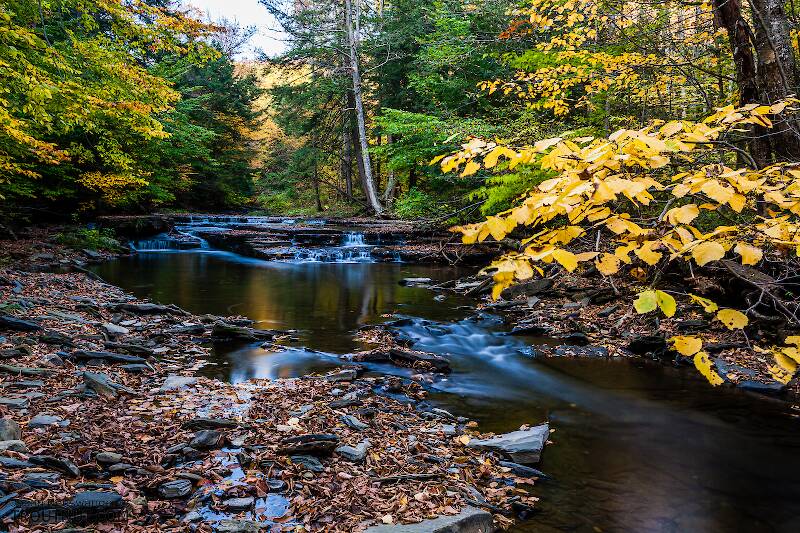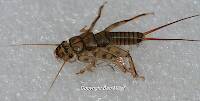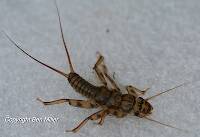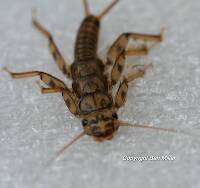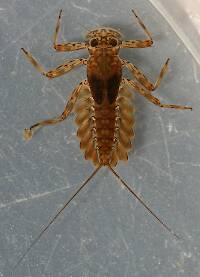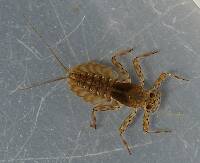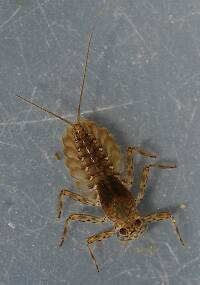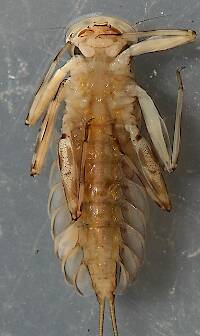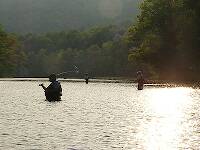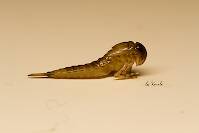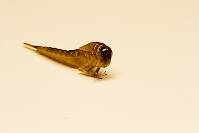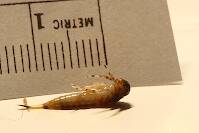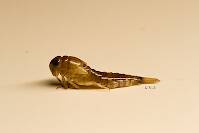
Blue-winged Olives
Baetis
Tiny Baetis mayflies are perhaps the most commonly encountered and imitated by anglers on all American trout streams due to their great abundance, widespread distribution, and trout-friendly emergence habits.
Featured on the forum

I caught this tiny larva without a case, but it seems to key pretty clearly to to Glossosomatidae. From there, the lack of sclerites on the mesonotum points to either Glossosoma or Anagapetus. Although it's difficult to see in a 2D image from the microscope, it's pretty clear in the live 3D view that the pronotum is only excised about 1/3 of its length to accommodate the forecoxa, not 2/3, which points to Glossosoma at Couplet 5 of the Key to Genera of Glossosomatidae Larvae.

Troutnut is a project started in 2003 by salmonid ecologist Jason "Troutnut" Neuswanger to help anglers and
fly tyers unabashedly embrace the entomological side of the sport. Learn more about Troutnut or
support the project for an enhanced experience here.
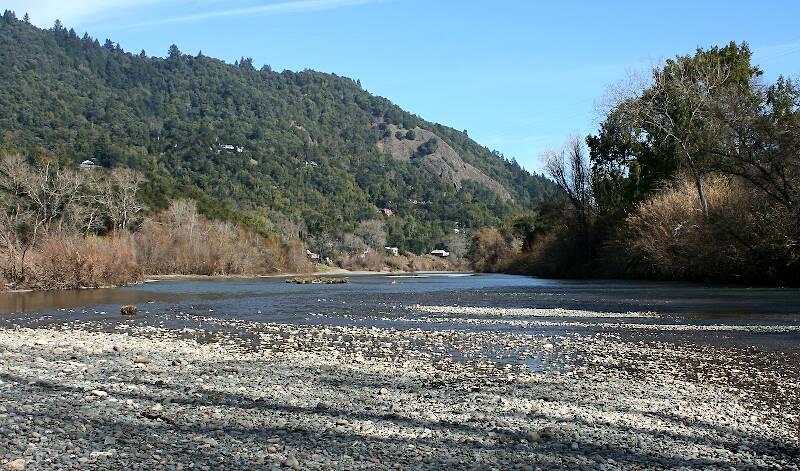
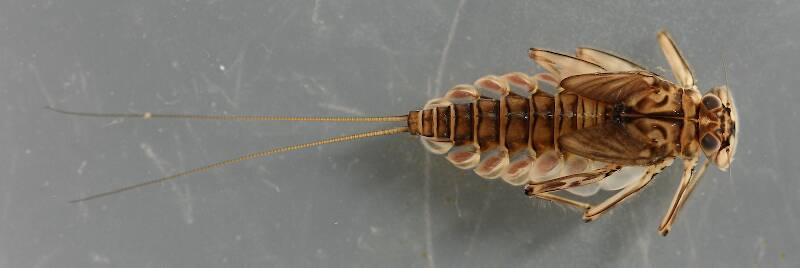
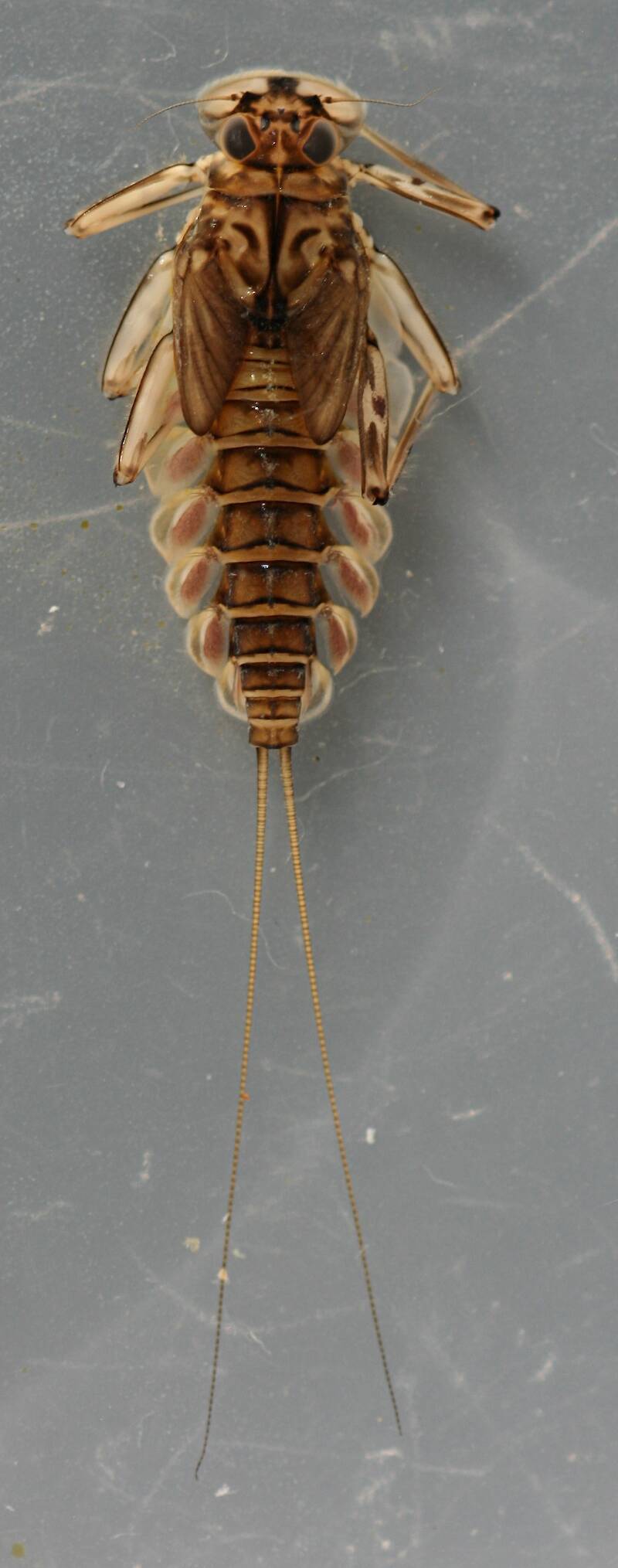
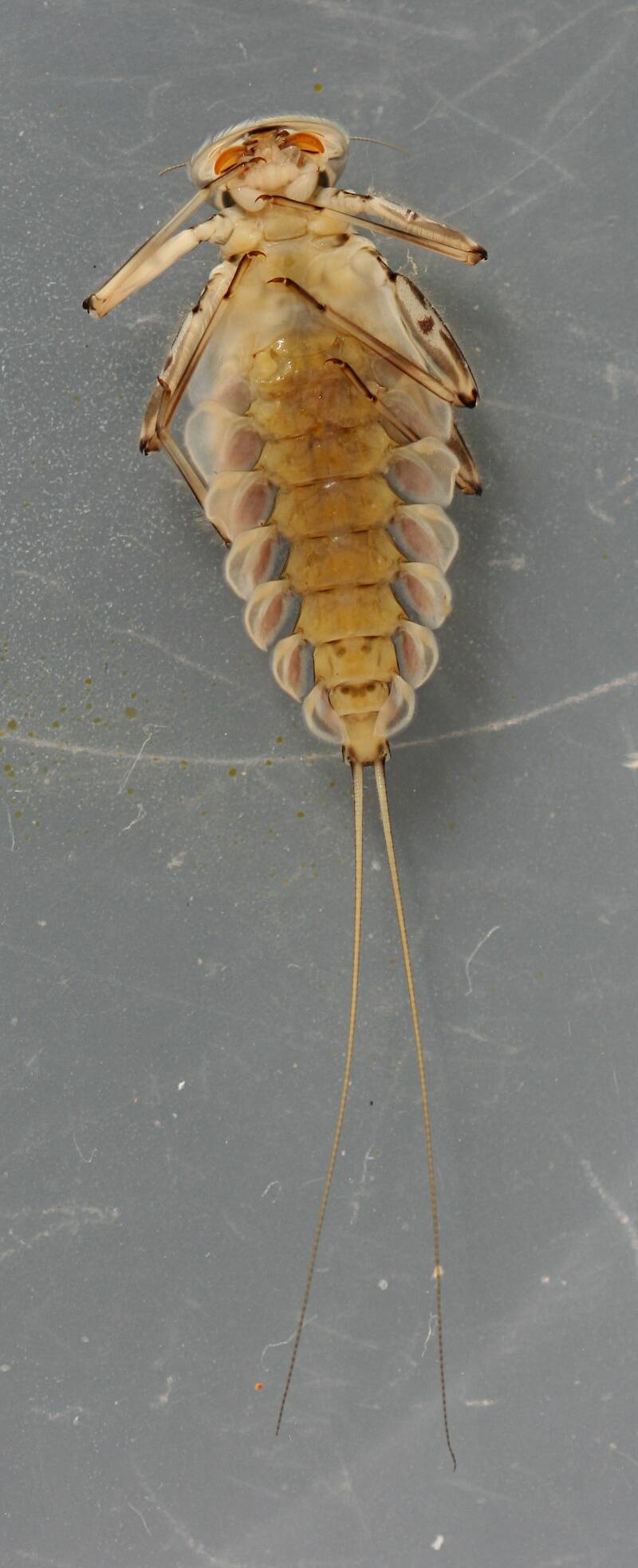
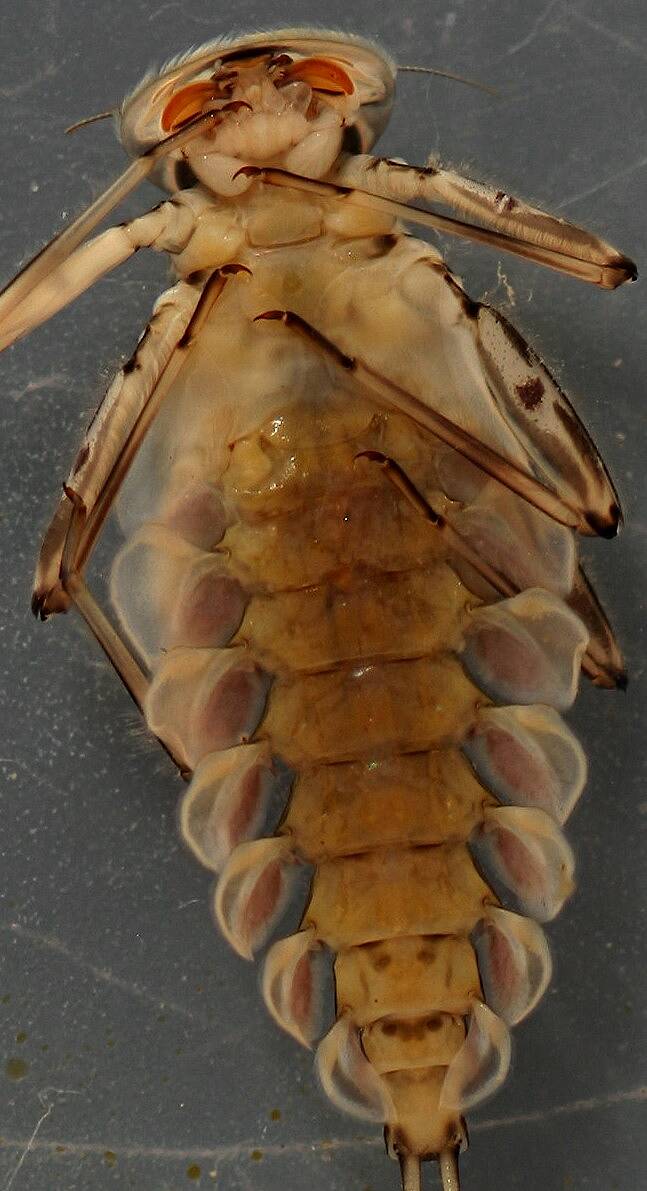
Millcreek on Dec 1, 2014December 1st, 2014, 11:33 am EST
I'm pretty sure This is Epeorus longimanus but want to leave myself a little room to weasel out if I'm wrong since some Epeorus species are undescribed as nymphs in California. Among the nymphs that are described it could only be E. longimanus, E. grandis or possibly E. permagnus although E. permagnus hasn't been reported in California yet. E. grandis and E. permagnus can't be differentiated from each other as larvae. Both are much stouter in appearance than E. longimanus and the head is abruptly expanded anteriorly. These three species have the first pair of gills meeting or nearly meeting on the venter of the nymph. On the other described species of Epeorus in California the gills do not meet or even come close to meeting.
The nymphs were collected from the Russian River March 2nd, 2013 in riffles with a clean substrate of large gravel and cobble. All the photos are of nymphs in alcohol. The pictures were taken within 12 hours of collection so the color is close to that of live specimens. The nymphs are 8.5 mm long (excluding cerci).
The nymphs were collected from the Russian River March 2nd, 2013 in riffles with a clean substrate of large gravel and cobble. All the photos are of nymphs in alcohol. The pictures were taken within 12 hours of collection so the color is close to that of live specimens. The nymphs are 8.5 mm long (excluding cerci).
"If we knew what it was we were doing, it would not be called research, would it?"
-Albert Einstein
-Albert Einstein
Entoman on Dec 4, 2014December 4th, 2014, 7:13 am EST
I haven't noticed it mentioned in descriptions but grandis has much shorter and stouter tails. Could this be one of our coastal species? Though it seems to comply with the keys, E. longimanus is found higher and more inland I think. They need pretty cold water.
"It's not that I find fishing so important, it's just that I find all other endeavors of Man equally unimportant... And not nearly as much fun!" Robert Traver, Anatomy of a Fisherman
Millcreek on Dec 4, 2014December 4th, 2014, 7:46 am EST
Kurt -
I don't see how it could be unless it's a nymph that's undescribed. I've got several vials of these little critters and they all show the same characteristics. As far as I know the only Epeorus on the west coast with the first set of gills meeting or nearly meeting underneath are E. longimanus, E. grandis and E. permagnus. The other species of Epeorus, the Epeorus albertae group don't have the first set of gills meeting underneath.
They tend to show up pretty early in the year when water temps are cooler here (40-55 F) and disappear when temperatures get much higher. They're also quite common in some of the smaller tributaries of the Russian and tend to stay there a longer period of time (possibly due to the cooler water temperatures because of the canopy on the smaller creeks).
Food for thought,
Mark
Could this be one of our coastal species?
I don't see how it could be unless it's a nymph that's undescribed. I've got several vials of these little critters and they all show the same characteristics. As far as I know the only Epeorus on the west coast with the first set of gills meeting or nearly meeting underneath are E. longimanus, E. grandis and E. permagnus. The other species of Epeorus, the Epeorus albertae group don't have the first set of gills meeting underneath.
They need pretty cold water.
They tend to show up pretty early in the year when water temps are cooler here (40-55 F) and disappear when temperatures get much higher. They're also quite common in some of the smaller tributaries of the Russian and tend to stay there a longer period of time (possibly due to the cooler water temperatures because of the canopy on the smaller creeks).
Food for thought,
Mark
"If we knew what it was we were doing, it would not be called research, would it?"
-Albert Einstein
-Albert Einstein
Entoman on Dec 4, 2014December 4th, 2014, 8:06 am EST
Interesting... I would think the water too warm for them, especially in the late Summer. Perhaps the eggs or early instars have adapted coping responses unique to this strain? I agree about albertae. The femoral maculae are wrong as well.
Do you have access to any descriptions of hesperus or lagunitas?
Do you have access to any descriptions of hesperus or lagunitas?
"It's not that I find fishing so important, it's just that I find all other endeavors of Man equally unimportant... And not nearly as much fun!" Robert Traver, Anatomy of a Fisherman
Millcreek on Dec 4, 2014December 4th, 2014, 8:32 am EST
Perhaps the eggs or early instars have adapted coping responses unique to this strain?
I suspect they are in the hyporheic zone, which is cooler.
Do you have access to any descriptions of hesperus or lagunitas?
Just a general description in an unpublished SAFIT account where they are lumped into the Epeorus albertae group. The key says this group does not have the gills meeting underneath.
"If we knew what it was we were doing, it would not be called research, would it?"
-Albert Einstein
-Albert Einstein
Entoman on Dec 4, 2014December 4th, 2014, 9:06 pm EST
Yeah, they have to be somewhere.
BTW, didn't mean to insinuate those other species were options - just hoping as an aside that you may have uncovered some nymph descriptions I was unaware of since we were talking about The genus. :)
BTW, didn't mean to insinuate those other species were options - just hoping as an aside that you may have uncovered some nymph descriptions I was unaware of since we were talking about The genus. :)
"It's not that I find fishing so important, it's just that I find all other endeavors of Man equally unimportant... And not nearly as much fun!" Robert Traver, Anatomy of a Fisherman
Millcreek on Dec 8, 2014December 8th, 2014, 6:04 pm EST
Sorry -
I had a stroke the other day and haven't had a chance to answer, will
answer when I feel better.
Mark
I had a stroke the other day and haven't had a chance to answer, will
answer when I feel better.
Mark
"If we knew what it was we were doing, it would not be called research, would it?"
-Albert Einstein
-Albert Einstein
Martinlf on Dec 11, 2014December 11th, 2014, 8:32 pm EST
Mark,
Hope you are better soon. Let us know when you get a chance.
--Louis
Hope you are better soon. Let us know when you get a chance.
--Louis
"He spread them a yard and a half. 'And every one that got away is this big.'"
--Fred Chappell
--Fred Chappell
Millcreek on Dec 14, 2014December 14th, 2014, 5:53 am EST
Louis-
I'm feeling much better. I'm able to type much better. Don't feel nearly as clumsy as I did. Couple more days and I should be as good as new.
Mark
Kurt-
Will attempt to answer your question as soon as possible. Should be in the next couple days,
Mark
I'm feeling much better. I'm able to type much better. Don't feel nearly as clumsy as I did. Couple more days and I should be as good as new.
Mark
Kurt-
Will attempt to answer your question as soon as possible. Should be in the next couple days,
Mark
"If we knew what it was we were doing, it would not be called research, would it?"
-Albert Einstein
-Albert Einstein
Entoman on Dec 14, 2014December 14th, 2014, 6:21 am EST
Take your time, buddy. It's Steelhead season and this is the first chance I've had to check in anyway, so no hurry. Glad to hear you're feeling better!
"It's not that I find fishing so important, it's just that I find all other endeavors of Man equally unimportant... And not nearly as much fun!" Robert Traver, Anatomy of a Fisherman
Quick Reply
Related Discussions
Topic
Replies
Last Reply
11
Aug 29, 2011
by Entoman
by Entoman
1
Oct 28, 2008
by GONZO
by GONZO
2
Aug 2, 2019
by Crepuscular
by Crepuscular
2
Mar 6, 2020
by Swpabrown
by Swpabrown

